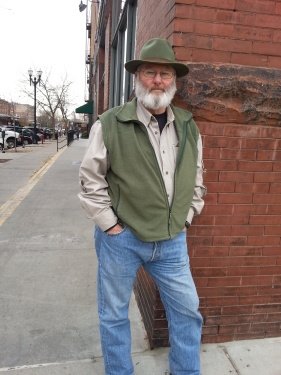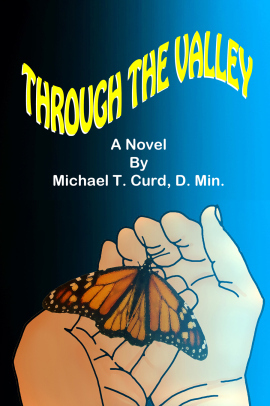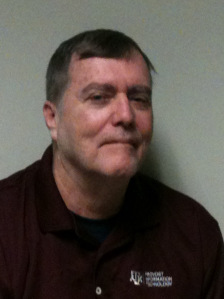Frances Evesham's Blog, page 6
May 8, 2014
The Victorian Language of Flowers: apples and apple blossom
Victorians used the language of flowers to pass messages without words.

Photo R J Higginson via Wikimedia
Myth and legend surround the simple apple, the malus domestica, the earliest cultivated tree in Europe.
Early in history, the power of healing and magical rebirth was attributed to the apple, but more sinister myths abound. After all, Eve tempted Adam with an apple. The wicked queen used a poisoned apple to send Snow White to sleep until wakened by a kiss.
For Victorians, then, the apple represented temptation, although apple blossom was considered altogether more positive and used to mean ‘preference.’
via wikimedia
Mrs Beeton, in her 1861 Book of Household Management, describes no fewer than 43 different recipes using apples, although she has little time for the fruit as nutrition, because “more than half of it consists of water.”
Filed under: flowers, language, Victorian Tagged: Frances Evesham, history, Victorian








May 5, 2014
Blog
Welcome to today’s new post, one of the series of posts inspired by the Victorian Language of Flowers.
Filed under: blog post Tagged: Frances Evesham, Victorian








My Writing Process: Michael T Curd
Hello and a very warm welcome to the third post in the My Writing Process hosted on this site. Last week, Larry Farmer talked about his book, The Kerr Construction Company, available from Amazon.com. Read his post here.
Today, I’m very pleased to welcome Michael T Curd, another fascinating and unusual writer, to the blog hop.
Thanks to Frances Evesham for hosting me on her blog site and giving me the opportunity to talk about my writing. Also, thanks to Larry Farmer ‘70, a fellow author and Aggie Bandsman from days of yore, for introducing me to Frances. He can be reached at her blog site.
I am currently marketing my first novel, Through the Valley, published by Mirror Publishing, Milwaukee, WI. What I have learned is that writing the manuscript is the easiest part of the process! Once that’s done, the work begins. I am extremely grateful to Neal Wooten, Managing Editor and his staff for all their help in getting the book published. I will be attending several professional cognate conferences as a vendor to sell TTV this spring and summer. In my spare time I have begun the sequel which will be entitled: Life, Death and Grace. Or maybe not.
How does my work differ from others of the same genre?
I really don’t know because I have only been able to find one other novel about hospital chaplaincy. I readily admit I am not website savvy and may have overlooked a number of great works. I do know my sixteen years in both military and corporate healthcare at several levels of the system has enabled me to have a wide perspective of the day to day lives of chaplains and those they serve. Having been ordained for forty-three years and being a psychotherapist for forty of those has also added different ways of understanding life in medical facilities.
My book is set in San Antonio, Texas and I’m a native of Ft. Worth. I have tried to reflect our unique culture along with some Texas history. I think it adds to the book and creates opportunities for patriots-in-exile, living in other states and countries to have the chance to “go home” if but for a little while in their minds.
The culture of the military also significantly influences my writing and that tends to distinguish the book. Healthcare shares many aspects of the military, such as the twenty-four hour clock, chain of command, life and death situations and very high cost for errors or failure. Both require the ability to function in highly stressful environments for long durations. These cultures are juxtaposed throughout the book.
Why do I write what I do?
I have never liked reading text books or professional “How To” works even though I have a few publications in professional journals. I once tried to read a college text on sexuality and it was boring! So, when I got tired of trying to explain to healthcare administrators, physicians, nurses and other medicos what a clinically trained chaplain can and does do, I decided to write a novel to enlighten the masses. I like reading novels.
I have always believed the adage, “Write about what you know.” When I was a young pup in a military hospital, I read The House of God by Samuel Shem, M.D. His impact on healthcare and me has been significant. My favorite author is W.E.B. Griffin and I have read pretty much everything in paperback he has written. I think the influence of both authors, along with a bit of Texas twang from Dan Jenkins, can be seen in my writing.
There continues to be a considerable amount of confusion about how chaplaincy is value added to the medical setting and why it is so essential in the continuum of mind-body-spirit healthcare. I tried to address that issue in my writing and will expand it in the next novel. The “war stories” are autobiographical, composites and/or come from the experiences of other clinicians with whom I have had the honor of doing ministry.
My mother was a “practical nurse” when I was a kid and I have always had a love for healthcare providers. When someone tells me they are an RN, their credibility increases one hundred fold. My friend, Ch (LTC-RET), U.S. Army, Mark Gruebmeyer said it best, “A trauma room is the closest thing we have to combat in a peace time environment.” I’m an adrenalin junkie. What’s not to like when I’m writing about healthcare?
How does my writing process work?
Most of the time it doesn’t, or at least it doesn’t seem to. When I started writing TTV, I limited myself to doing so only when I was on an aircraft or in a terminal. I was in corporate healthcare then and traveled quite a bit. The last five years of my active ministry, I was the solo pastor of a United Methodist church in a small, rural town in Nebraska. I did almost no writing then, except when I was in Hawaii visiting my son. That’s where I finished the last two chapters of TTV, fifteen months apart.
I usually just sit at the computer and start writing, given that I have a story and/or issue in mind to share and the time do so. I don’t write every day. The first, and only, chapter of my second book was written in February of this year. I haven’t written sense then. I have a long list of potential stories and issues to share. The mechanics of writing and my limited computer skills gets in the way of a flowing stream of consciousness, which is my favorite way to write. At a recent workshop, provided by Dr. Becky Breed and Lucy Adkins I had an epiphany; writing by hand is much more creative and is easier for me. I plan to experiment with that for chapter two. So what if no one else can read my writing?
Through the Valley: on sale at Amazon.com
Next Week:
Neal Wooten—grew up on a pig farm on Sand Mountain in the northeast corner of Alabama before being dragged kicking and screaming to the snow-infested plains of the American Midwest. He now resides in Milwaukee with his wife and three dogs. He is a contributor to the Huffington Post, columnist for the Mountain Valley News, Op-ed writer for the Walking Dead Fan Club, cartoonist, artist, and standup comedian. His website is Pages of Wonder
Filed under: My Writing Process Tagged: Frances Evesham, Larry Farmer, Michael T Curd, writing








April 27, 2014
My Writing Process: Larry Lee Farmer
Today I’m delighted to be welcoming Larry to my blog, to talk about his writing process.
Every Monday, authors blog about how and why they write, then pass the baton to three more writers. You can find Larry’s hand0vers at the bottom of the page, but first, here’s a little about the man himself.
What am I working on?
The Kerr Construction Company is about a period of my life where I was in transition. I went to college, but was looking for something. I was restless. I am of the sixties generation and there was a lot of turmoil in my day. I was of the ilk though that believed in the war in Vietnam.
I grew up in rural Texas and had a father that was a hero in World War II. I did not relate with most of my generation. I chose to go to Vietnam and quit college to join the Marines. When I got out of the Marines, I traveled, trying to sort things out. I came home, finished college, and worked in prosperous, booming Houston. I had nothing against wealth or capitalism or the industrial age, but the rat race and materialism, mixed with so much of my generation being on drugs and into the fast lane and parties, turned me off. I wanted to get away. Not to rebel, but to find my head, as the saying back then portrayed.
I went out to the desert in western New Mexico and worked for minimum wage as a laborer on a construction crew, living in the back of a panel truck. I worked with Navajo Indians and illegal aliens. And loved it. No one could figure out what I was doing there. I didn’t belong. Or at least wasn’t supposed to belong to this scene. But it was the America I loved and missed much more than the materialistic one I left behind.
And I met a girl while there. A gorgeous Hispanic girl. Also in transition in her life. Just divorced and trying to find herself too. She was precious. Even me being an Anglo and her Hispanic added to the allure. We weren’t trying to be politically correct. We weren’t trying to be anything. Just ourselves. Whatever that turned out to be.
How does my work differ from others of its genre?
I do have an imagination and I do write fiction. I like the definition of fiction I heard in that, artistically speaking, you can tell the truth better through this medium. Most of my stories are based on events I lived in my life. I will give an artistic expression and flair, but not for the sake of fantasy, or fabrication. But for insight. I want to be entertaining, but lived in the sixties generation and love having a message in it all.
Why do I write what I do?
I need to relate things. My feelings and insights. Share things I’ve experienced. I need to say things. I have to do it in an entertaining and marketable manner, but with all this in mind.
How does my writing process work?
I start off just trying to get the ideas out there. I put forth effort getting it in a presentable way at the beginning, but mostly start off just trying to get it out at all. Then I go back and smooth it up and add new ideas, or improve on the old. I layer my writing in this manner.
Dalhart McIlhenny is restless after finishing college. With old school values from his rural upbringing in Texas and a chip on his shoulder from being a Marine during the Age of Aquarius, he sets off on a quest. He wants something different in his life. Something others of his generation wouldn’t understand.
The Indian Capital of America. That’s what they call Gallup, New Mexico, and that’s where he’ll search for whatever it is he wants. But first he must find a job. One no one else wants. One as a laborer for minimum wage for the Kerr Construction Company, working with the local Navajo and with illegal aliens.
Far away from the fast cars and parties he doesn’t care about like others do. He becomes best friends with an ex-bullfighter from Durango and finds allure in just trying to survive in a world that doesn’t care. Then he meets Carmen.
“Quitting time, McIlhenny,” I heard Ira shout.
“Another five minutes,” I shouted back.
“I’ll load up,” he answered. “Oh yeah, another thing.”
“What’s that?” I asked when he didn’t follow through.
“Didn’t you say you used to play football?” he asked.
“Yeah.”
“You’re a fast runner, right?”
What does that mean? “Yeah,” I answered again.
“You better be. This is a stick of dynamite here in my hand.”
He lit it and threw it my direction. I didn’t look back until I heard the explosion. There was a hole ten yards from where I used to be.
“Come on,” he shouted again, not bothering to laugh. “Let’s go home. Go get your shovel if it’s still there.”
The Kerr Construction Company is available on Amazon.
Next bloggers are Angela Hayes, Michael T. Curd and Daniel Schlueter
Angela Hayes
A married mother of two, I split my time between bringing characters to life by computer, and yarn to life with needle and hook.
You can find me at my blog. I’d love to hear from you.
Angela will post her My Writing Process on her blog on Monday 12 May.
Heart, Soul, and Happily Ever After
Love’s Battle- available on Amazon.
Michael T. Curd, D. Min., BCC, LMFT, DP.
Michael spent sixteen plus years as a clinically trained chaplain in all levels of health care chaplaincy and twenty years as a U.S. Army Chaplain.
He has been a psychotherapist for forty years and is a Subject Matter Expert in the resolution of trauma, Post Traumatic Stress/PTSD, grief and conflict.
Dr. Curd developed and wrote the first approved “Protocol for the Role of Chaplains in a Trauma/Medical Resuscitation” in 1993 which continues to be used throughout the Armed Forces.
He is the father of four adult children, grandfather of three and an avid angler.
Blogsite: Pages of Wonder
Through the Valley is available on Amazon.
Michael’s My Writing Process post will appear here on 5 May 2014.
Daniel Schlueter
Daniel Schlueter received both his BS in Nuclear Engineering and an MS in Computer Science from Texas A&M University.
He served on active duty in the U.S. Army attaining the rank of Captain.
He then received his MA in Theological Studies from Gordon-Conwell Theological Seminary.
After working as an engineer for GE Aircraft Engines for more than 28 years, he received his DMin from Gordon-Conwell Theological Seminary in Spiritual Formation.
He and his wife, Lita, have been married for more than 40 years.
Blogsite: In the Crucible by Dan
Filed under: Uncategorized








April 20, 2014
My Writing Process: how and why I write Victorian mystery romances
Hello and welcome. I’m Frances Evesham. I’m going to let you into some of my writing secrets and share an early peep at the official publisher’s description of my new novel. Only the friends on my email list have seen it so far. Scroll down to the bottom of the page if you can’t wait!

My author friend Pat McDonald, kindly invited me to take part in this Writing Process blog hop. You can read her post on her Facebook page.
What am I working on?
Life is extra exciting at the Evesham’s just now, as we’re busy getting ready for the launch of my first novel, An Independent Woman, a historical mystery romance, on 11 June 2014.
At Thatcham Hall, an English Great House, the fiery, determined Philomena leaps straight out of the frying pan into the fire. She’s escaped the perils of 19th century London only to tumble into a whole new set of predicaments that force her to face an impossible dilemma.
Her story was enormous fun to write, and Thatcham Hall made such an impression on me that I couldn’t wait to go back there with the next story.
The sequel to An Independent Woman, half-written, is set just a few years later. It promises plenty of danger, excitement and romance.
How does my work differ from others of its genre?
I love a strong plot and plenty of action. I’m proud of feisty Philomena, who’s brave enough to take her destiny in her own hands in the 19th Century, when women came a distinct second to men.
Debbie Tailor has designed a deliciously atmospheric, Gothic cover for An Independent Woman. It made me wonder what other secrets and gossip the walls of Thatcham Hall have heard.

An Independent Woman
Why do I write what I do?
One day, when I was very small, I visited the Post Office in a tiny Cotswold village where my mother grew up. There, I met Great Aunt Annie, a maiden Victorian lady, almost a hundred years old. Tiny and neat, with cotton-wool hair styled in a careful bun at the back of her neck, Aunt Annie bustled about, making cups of tea and cutting slices of fruitcake.
Aunt Annie lived quite alone, content, full of lively interest in the world and its news. She would have adored the internet.
Philomena, the Independent Woman of my novel, is a Victorian woman: self-sufficient, spirited and capable. The Victorians invented and built things. They engineered steam trains, bridges and factory machinery. Their photographs suggest they were solemn and unsmiling, but that was because they had to keep still for 30 seconds for every shot.
I believe the Victorians were like us inside, nursing their own hopes and dreams of adventure, love and happiness. I’m having fun writing their stories.
How does my writing process work?
Some say writing is a form of self-hypnosis, where your subconscious takes over from the careful, sensible, everyday part of your brain. I love the feeling of travelling into another world in my head as the story unfolds.
Before I begin, I get to know my characters well. Who are they? What happened to them that made them who they are? What do they want and how can they achieve it?
A rough plan for the story takes shape and then the fun starts. At once, my characters grab hold of the tale and startle me with their actions and reactions. They invade my dreams so I wake in the night with a scene in my head that insists I record it then and there. I make a quick note on my phone: sometimes I can read it in the morning, sometimes it turns out to be nothing more than gobbledegook.
I write at a tiny desk in the smallest, cosiest bedroom in the house, now that our children have all left home. My shelves are full of family photos, presents from the children, folders of family history and, of course, far too many books.
I scribble unreadable notes on scraps of paper and pin them to a corkboard above my head. I like to research in the evening and write during the day, leaving time to cook spicy things for dinner and watch nonsense on television.
When I have a plot problem, I walk in the Somerset countryside or visit Burnham on Sea’s nine-legged lighthouse on the beach, and I read, read, read whenever I have the chance.
Please keep in touch
An Independent Woman will be available through Amazon and The Wild Rose Press, my publishers, on 11 June 2014.
Enter your email address here to join the group of friends who’ll be first with news of my books, including the launch date for the print version of An Independent Woman and a first look at an excerpt.
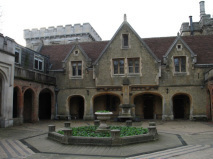
via Wikimedia Commons
Next week, I’m handing the parchment and quill pen to three author friends: Heather McCollum, R.E. Mullins and Larry Lee Farmer.
Heather McCollum is an award winning, historical paranormal romance writer, a member of the Ruby Slippered Sisterhood of 2009 Golden Heart finalists & a surviving warrior of ovarian cancer. She resides with her very own Highland hero & 3 spirited kids on the mid-Atlantic coast.
Heather’s post will be on her blog Heather McCollum.
R. E. Mullins was born and raised in Joplin, Missouri. She has also lived in Tulsa, Oklahoma, Mt. Clemens, Michigan, Springfield, Missouri and Colorado Springs, Colorado. Though she has loved each area, the Ozarks hold a special place in her heart.
Find R. E. Mullins’ post on Goodreads or on her Facebook page.
Come back here on 28th April next week, for Larry Lee Farmer’s post on my blog. I’m hosting it for a while as his site is under construction.
Larry recently published a mini novel, ‘The Kerr Construction Company,’ through the Wild Rose Press that is now on Kindle ebooks through Amazon.
Finally, as promised, here is the Official Publisher’s Blurb for An Independent Woman:
With nothing left from her childhood except a tiny portrait of a beautiful woman, some skill with a needle, and the knowledge of a dreadful secret, Philomena escapes her tormentor, Joseph, and the dank fogs of Victorian London, only for a train crash to interrupt her quest for independence and freedom.
Trapped between the upstairs and downstairs occupants of a great country house, Philomena hears whispers of the mysteries and lies that lurk in empty corridors and behind closed doors. Her rescuer, the dangerous, enigmatic Hugh, Lord Thatcham, wrestles with his own demons and makes Philomena’s heart race, but she must fight her passion for she can never marry.
Haunted by her past, Philomena’s only hope of happiness is to confront the evil forces that threaten to destroy her.
Join my friends for early news of the launch of An Independent Woman.
Filed under: evesham, fiction, history, mystery, novels Tagged: 19th century, An Independent Woman, Frances Evesham, history, Novels, Victorian








April 14, 2014
Crime in Victorian London: 19th Century Murder at Manor Place
A sudden noise above their heads startled Philip and Susannah Beard awake, early in the morning of 31 July 1860.
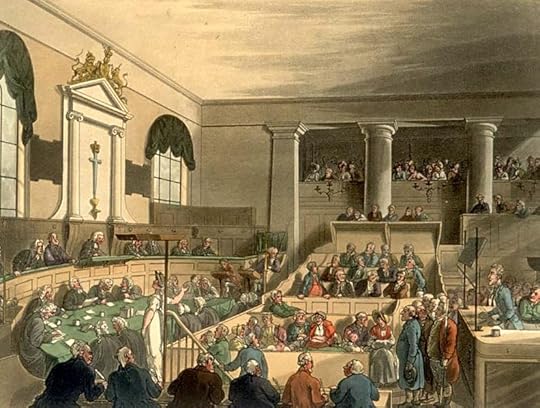
The Old Bailey in 19th Century via Wikimedia Commons
As Philip hurried upstairs to the third floor of 16 Manor Place, he heard a scream.
At first, he saw only a spot of blood on the stairs, then as he climbed higher, he found the body of an 11-year-old boy lying dead on the landing. His throat had been cut. “Murder!” Philip cried.
There was more horror beyond.
Next to the young boy lay a woman, lying on her face. A second woman lay on her left. In the next room, on a bed, lay another young boy or around 7 years of age.
Family
John Youngman, a tailor, lived in 16 Manor Place, Walworth in 1860 with his wife and two young sons, Thomas and Charles, in the rooms above. An older son, William, had been there for a week, after giving notice to his employer, Dr Duncan. William had worked for Dr Duncan as a footman.
Mary Wells Streeter, William’s sweetheart, came to stay on 30th July 1860. She and William went out for the evening, returning on good terms at 10 pm. That night, William slept in a bed with Thomas, with their father in the same room. Mary and Charles spent the night in the next room, with Mr Youngman’s wife.
July 31st
at 5 o’clock in the morning of July 31st, Mr Youngman left home to go to work with another son, John, at the tailor’s workshop.
At 6.20 he was called home to the horrific scene.
His wife, his two sons and Mary were all dead. Mary and the two boys had all been stabbed and had their throats cut, while his wife had died just from stab wounds. There were two adult footprints in the copious blood in the room.
William, present at the time, with blood on his hands and feet and a torn nightshirt, told the police, “My mother has done all this, she has murdered my two brothers and my sweetheart and I – in self-defence – I believe I have murdered her.”
Evidence
William owned the knife used in the attacks, claiming he used it for food. The point was broken off by the violence of the attacks.
Wiiliam’s family had a history of insanity, with his maternal grandmother dying in a lunatic asylum and his father’s father having spent some time in an asylum.
The most damning evidence in the case came in the form of letters.
Letters
William had asked Mary Streeter to marry him. The police found a series of letters kept in a box to which William had the key. The letters were long and full of expressions of love and arrangements for the marriage.
July 13th
We will be married at St Martin’s Charing Cross on Saturday Aug 11th next….
You need only wear your black clothes, my dear girl, at our wedding….
I have published the banns of our marriage …
After marriage you will have all you wish for: the clothes you have will do for the present …
I want to assure your life when you come up on Monday week …
July 16th
In this letter, William explains that he has given notice to leave his post in order to get married. He says he will,
Give Mrs Duncan a good talking to …when I hope the doctor will tell me to go at once …
He says this will enable him to leave early, but still have his wages paid until 11th August.
He tells Mary to send him details he needs for the life assurance policy, including her birth certificate and the ages of her parents. He also needs her to state that no one in the family has died of any one of a list of diseases, including consumption. Although her sister had succumbed to this disease less than twelve months earlier, William was at pains to explain that Mary must say all were healthy.
The policy will be for £100.
The next letter William sends to Mary is undated. He writes:
I am very much hurt to find you state in your note that you do not wish to have your life assured…
He refers to her parents.
You can do has you like without them preventing …
If Mary continues to refuse to allow him to take out life assurance, William tells her,
I cannot think you would love me …
On 19th July, William wrote again. Mary has clearly agreed to go ahead with the life assurance policy.
Do not say anything to your mother about what you are going to do …
By 21 July, Mary must have changed her mind again, for William writes,
I am very much hurt to find you say you will not have your life assured …
I cannot believe you love me unless you do …
You have promised me, now if you love me do this.
28 July
The business clearly settled, William writes to Mary, now calling her My beloved Polly.
He gives instructions for Mary to meet him on Monday 30th July at London Bridge Station. She is to bring or burn all her letters.
Life assurance policy
The policy, for £100, effected by William Godfrey Youngman on the life of Mary Wells Streeter, commencing on 25th July, was produced in court. It contained Mary’s untrue response, No to the question Has any member of your family died of consumption?
Verdict
Given the chilling evidence of a motive, it is no surprise the jury brought in a verdict of guilty. It took less than half an hour for them to reach their decision.
Sentence
William Godfrey Youngman was sentenced to death. He was hanged on 4 September 1860 at Horsemonger Lane Gaol, in front of an audience of 30,000. He refused to admit to the offence even at the gallows.
Sir Arthur Conan Doyle writes a highly embellished account of this affair in the strand Magazine of 1901, calling it The Holocaust of Manor Place.
The transcript from William’s trial is on The Old Bailey Online
Victorian crime is endlessly fascinating. Please leave a comment if you can point me to more!
Remember to leave your email address in the form below, to hear about my Victorian mystery romance, and news of future publications.
[contact-form]
Filed under: court, crime, history, Victorian Tagged: 19th century, crime, Frances Evesham, London, manor place, murder, Victorian









